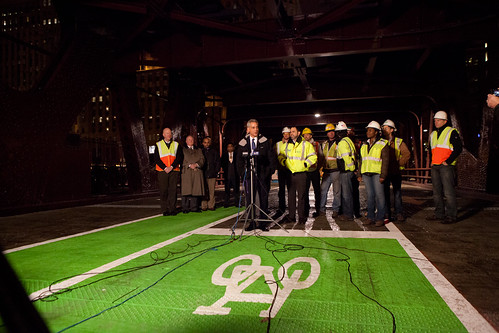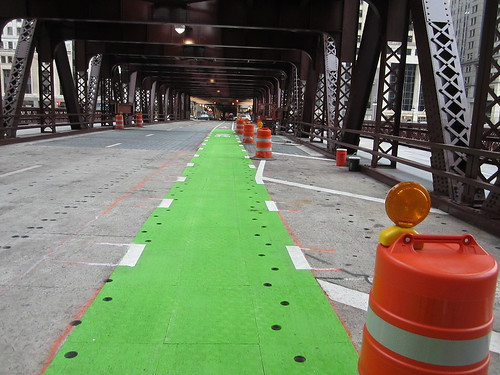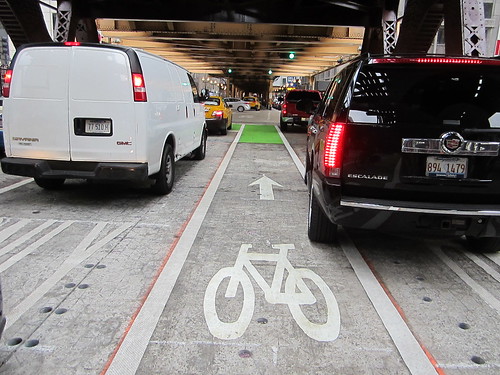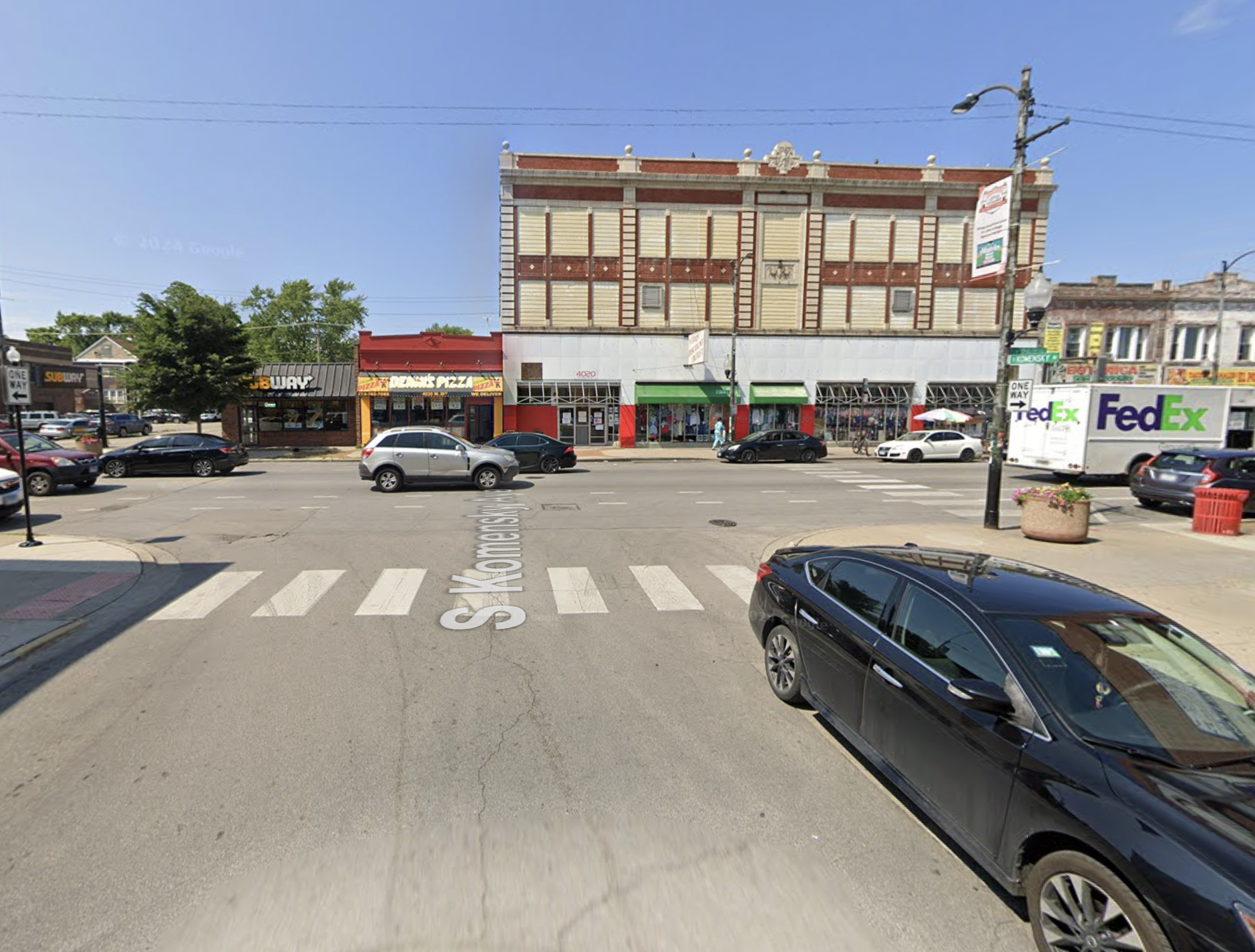Bicycle riders should be generally pleased with the new Wells Street Bridge, which opened to traffic early this morning for the first time since reconstruction began a year ago. Most of the slippery metal grate bridge decking -- including the entire bike lane on the span -- has been filled in with concrete, providing a safe riding surface.
The old lane configuration at Wacker, looking south
Previously the bike lane was located to the far right of the bridge deck and covered with non-slip plates, AKA “Kathy plates” after bike advocate Kathy Schubert, whose letter-writing campaign to the Chicago Department of Transportation resulted in their installation. The lane has been moved a few feet to the left, with dead space striped to the right of the lane. This has a bit of a road-diet effect, narrowing the remaining space for cars, which previously had been a broad expanse of unmarked metal decking but is now clearly defined as two travel lanes.
Green paint has been added to draw attention to the bike lane on the south half of the bridge, where motorists will be crossing the lane to make a right turn. As was the case with the old configuration, at Wacker Drive, the bike lane is sandwiched between a through lane and the right turn-lane, which means bicyclists have to ride between two lanes of moving cars. However, a bike box has been added, which will help cyclists get in position to make a left turn onto Wacker.
The bridge, which was originally built in 1922, was completely reconstructed to extend its lifespan but keep its vintage appearance. The $50 million project, largely funded by federal grants, involved replacing the trusses and steel framing for the lower level road and upper level railway structures. The mechanical and electrical components were also replaced, and the bridge’s railings, bridge houses and other components were reconstructed to preserve its Jazz Age look.
Pedestrian, bike, and car access to the bridge was disrupted during the one-year rehab but, save for two planned nine-day closures this spring, ‘L’ train service was maintained. While the bridge rehab was going on, the CTA rebuilt the Loop ‘L’ junction at Lake and Wells streets, known as Tower 18, and performed additional track replacement at the curve over Hubbard Street between Wells and Franklin Street. Combining their work saved CDOT and CTA a total of $500,000 in construction coordination costs, according to the Mayor’s Office.
When the construction barriers were removed around 6:15 this morning, the first Chicagoan to cross the bridge was bike courier Lionel Floyd, 46, according to the Tribune. “Very nice,” was his assessment after he pedaled to Wacker. “Smooth.”









